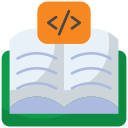
Introduction to Open Source Learning Platforms
Open source learning platforms have revolutionized the landscape of education by empowering educators, institutions, and learners to access, customize, and share robust digital tools for teaching and learning. These platforms are typically distributed under licenses that allow users to view, modify, and enhance the source code, creating a culture of collaboration, innovation, and continuous improvement. As educational needs evolve, open source learning platforms offer exceptional flexibility, cost-effectiveness, and the opportunity to contribute to the global education community. Understanding their origins, features, and impact is crucial for anyone seeking to harness the power of technology in education.

Early Beginnings
The inception of open source learning platforms can be traced back to the rise of open source software in general, where developers shared their work freely for others to use and improve. Early adopters in education saw a similar potential for learning management systems, launching projects that aimed to make educational software accessible and adaptable. Their efforts laid the foundational values of transparency and collective problem-solving that continue to shape the direction of educational technology today.
Growth and Adoption
As awareness of the potential cost-savings and flexibility of open source solutions spread, more institutions began to explore these platforms to manage and deliver educational content. This growth was fueled by a vibrant developer community and educators eager to customize learning experiences according to their students’ unique needs. Widespread adoption also led to the accumulation of a large repository of plugins, extensions, and best practices that further increased the functionality and appeal of these systems.
Influential Projects
Throughout the evolution of open source learning platforms, several key projects emerged as leaders in the field, setting industry standards and influencing new developments. These projects fostered global communities of contributors, who collectively enhanced usability, accessibility, and pedagogical features. Their success stories encouraged other educators and developers to start their own initiatives, driving ongoing growth in open educational technologies.
Core Features of Open Source Learning Platforms
Customization Capabilities
A defining feature of open source learning platforms is the ability to tailor every aspect of the system to suit unique institutional or pedagogical needs. Unlike proprietary systems, users can modify the appearance, add or remove functionalities, and adapt workflows, ensuring the platform meets their requirements precisely. This flexibility has proven invaluable for education providers seeking to implement specialized instructional methods, integrate unique resources, or support diverse learning environments.
User and Content Management Tools
Successful open source learning platforms include comprehensive management tools that make organizing users and content intuitive and efficient. Administrators can easily enroll participants, assign roles, and manage permissions, while instructors are empowered to create, update, and deliver multifaceted content. These tools not only streamline logistics but also enhance the educational experience by ensuring that students have seamless access to the resources they need.
Integration and Interoperability
Another powerful aspect of open source platforms is their ability to integrate with a wide variety of educational technologies through open standards and application interfaces. Institutions can link their learning environment to external tools, such as video conferencing, plagiarism detection, or analytics platforms, to expand functionality. This commitment to interoperability prevents vendor lock-in and supports the evolving technological needs of educational organizations.
Advantages of Open Source Solutions in Education
Cost Effectiveness
One of the most significant benefits of open source platforms is their potential to reduce costs for schools, universities, and individual educators. Without recurring licensing fees, institutions can allocate resources toward other priorities, such as content development or teacher training. While implementation and maintenance may still require investment, the long-term financial advantages provide compelling reasons for educational organizations to consider open source solutions.
Community Collaboration
The open source model thrives on the active collaboration of its communities, including educators, software developers, and instructional designers. Through forums, code contributions, and shared educational resources, these communities drive innovation and quality assurance. As a result, open source platforms benefit from diverse perspectives and a rapid cycle of feedback and improvement, ensuring the software stays relevant and robust.
Continuous Innovation
Because open source platforms are not tied to a single vendor’s roadmap, development is often more responsive to the evolving needs of educators and learners. New features, plugins, and integrations can be rapidly developed and shared, allowing institutions to take advantage of the latest pedagogical trends and technological advancements. This continual innovation helps keep educational experiences engaging and effective in a competitive digital landscape.
Implementing and maintaining open source learning platforms sometimes demands a higher level of technical expertise than proprietary solutions. Tasks such as installation, customization, and troubleshooting may require skilled personnel or external support services. Some institutions, particularly those with limited IT resources, might find these technical demands a barrier to successful adoption and ongoing use.
Challenges and Limitations

By eliminating licensing costs and enabling local customization, open source platforms have made high-quality educational technologies accessible to schools and organizations in low-resource settings. This greater access levels the playing field and allows learners from diverse backgrounds to participate in digital learning experiences previously beyond reach.

The open nature of these platforms allows communities to adapt language, features, and content to suit local cultures and needs. Localization efforts ensure that learners can interact with educational materials in their native languages and in culturally relevant ways. This inclusivity extends to supporting accessibility standards, making education more equitable for learners with disabilities.

Open source initiatives drive international cooperation among educators, students, and developers. By sharing code, resources, and best practices, participants build on each other’s successes, collectively raising the quality and effectiveness of digital education worldwide. These cross-border alliances accelerate innovation and foster mutual understanding in the evolving landscape of global education.

Modular Learning Environments
Some of the most popular platforms are designed with a modular architecture, enabling institutions to tailor the learning environment by adding or removing features as needed. This modularity allows for extensive customization, making it possible to accommodate a wide range of educational scenarios—from basic course management to complex blended learning solutions.

Community-Oriented Initiatives
Successful platforms are often supported by active user and developer communities that contribute new features, troubleshoot issues, and share best practices. These communities play a crucial role in the ongoing maintenance and enhancement of the platform. Their shared commitment helps ensure the software remains responsive to the diverse and evolving needs of the global education community.

Large-Scale Institutional Deployments
Many open source platforms have demonstrated their scalability by supporting deployments for massive numbers of users, including entire school systems and large universities. This proven scalability gives confidence to new adopters and showcases the ability of open source solutions to handle complex, high-demand educational environments successfully.
The Role of Community in Open Source Learning
Shared Governance Models
Open source platforms often rely on collaborative governance structures where decision-making is distributed across stakeholder groups. Whether through foundation boards or elected committees, these models promote transparency, accountability, and inclusivity. They ensure that critical decisions reflect the views and priorities of the broader community, maintaining the integrity and long-term viability of the project.
Encouraging Contributions
A core strength of open source learning projects is their openness to contributions from all participants, regardless of geographical location or professional background. Contributors bring diverse skills—such as software development, instructional design, language translation, and user support—collectively enhancing the platform. This participatory culture fosters a sense of ownership, encourages innovation, and ensures continuous improvement.
Support and Training Networks
Community support does not stop at development; active forums, documentation projects, and volunteer-led trainings provide invaluable resources to users and administrators. Such peer-to-peer networks make it easier for new adopters to implement the platform and for experienced users to share insights and best practices. These collaborative support structures are fundamental to the success and longevity of open source solutions.
